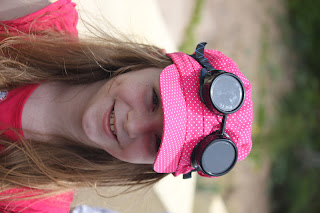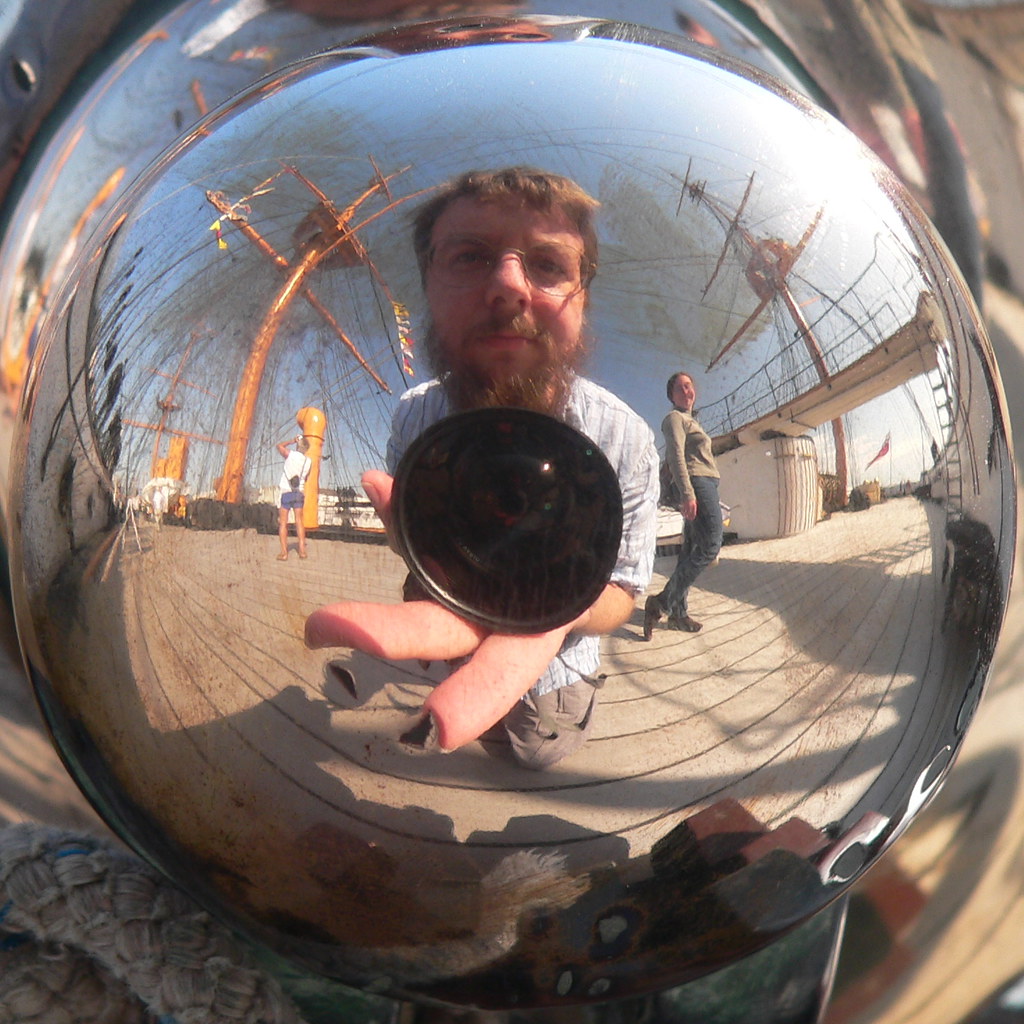First of all we needed shaded glass to view the sun with. I ordered shade 14 lenses to go into welders goggles (we couldn't find any solar viewing level lenses locally), plus a replacement plate for a welders mask--to hold over the camera--and I saw some special solar viewing glasses for a few dollars so I ordered one of those as well. I figured if I ordered three contingencies at least one would arrive on time. All three made it! V and the kids had a lot of fun trying them on.
Hawai'i was in the perfect spot to view the transit. Enthusiasts were traveling here from all around the world. I took off from work on Tuesday. We arranged to pop popcorn. I charged up the camera battery. Everything was ready.
Early in the morning before the transit I was able to get pictures of some sunspots.
However, as noon approached (the beginning of the transit), the clouds rolled in.
For over an hour I couldn't get a clear view of the sun. I told V, "we have a problem" and she understood exactly what I meant. So we suited up the kids and loaded them into the van.
We headed toward the interior of the island and then north toward the shore to try to get ahead of the mountains. Also, there were more breaks in the clouds apparent to the north. Noon, and the beginning of the transit were approaching.
I managed to get a picture at 12:11:16pm local time and Venus was not apparent. At 12:22:08 I got another picture (which was very fuzzy and had clouds moving over it) but you could clearly see a bite taken out of the edge where Venus was moving in.
I took this image a few minutes later; it is a bit clearer. The mottled pattern over the sun is caused by the clouds. Venus is at the lower left. At 12:22:20 Venus was still touching the edge:
Sorry, the picture is shaky. This was taken handheld beside the van on the side of the road as the clouds opened up. There was an optical « teardrop » effect, where the edge of Venus seemed to connect to the edge of the sun longer than anticipated, that vexed astronomers during the first international transit measurements. By 12:41:40 Venus was clearly off the edge and had moved fully inside the suns disk.
Here it is at the upper right. I was at a different angle (again parked on the side of the road) taking the shot. And yes, there was a lot of cloud cover we were dealing with. V was driving and I was watching the sky. Whenever it opened up we pulled off to the side of the road to check it out. The kids found it exciting but I think they still question my sanity.
Above is a clearer image from later on. Venus is at about 4 o'clock. We could see it with just the shades and without enlarging the image. We stopped in some parking lots and more than once strangers came up to me to ask if I could see it. I gave them the shades and told them where to look so they could have a look for themselves. I told them that Earth is about the same size as Venus and that is what we would look like it we switched places. It helps drive home how large the sun really is. Also keep in mind, Venus is much closer to Earth than it is to the sun. Stars are really big! Below is the same image enlarged to help show the sunspots.
We stopped for lunch and I ran out intermittantly as a break came in the clouds to capture and image. This is at 3:37:36 PM when Venus is more interior.
Here is a later image at 5:02:24 PM as Venus is approaching the opposite edge. Again it is visible at about 4 o'clock without enlarging.
Later in the day we returned home where the sky had cleared up a bit. As the sun approached the horizon more objects came into the foreground which gave some perspective.
Above is the sun with a power line crossing in the foreground. Venus is at 4:30.
By 6:23:50 I was able to catch an image of Venus touching the other edge of the sun. The image below is from a few moments later when it was clearer.
Here F is catching the last few moments.
The last image I caught with Venus making a dent was at 6:35:04 PM
Here is an illustration of using the parallax and difference in times of transit from two points on Earth to estimate the distance.
From our observations I would hazard the start of transit at 12:16:22 and the end at approximately 18:36:00. This gives a transit time of 6 hours, 19 minutes, and 38 seconds; or approximately 22,778 seconds from W 158 degrees and N 21 degrees 30 minutes. If someone has an estimate from another position on Earth, and if we know the distance between us, we can make our own estimate of the distance to the sun.






























1 comment:
Love the pictures - everyone looks like a proper super-villain! :D
Post a Comment